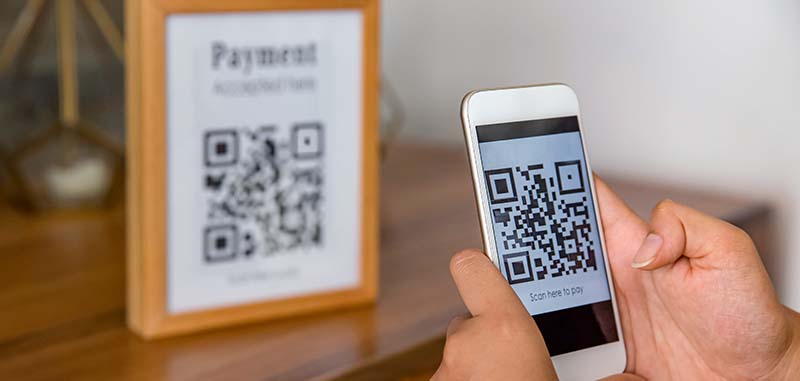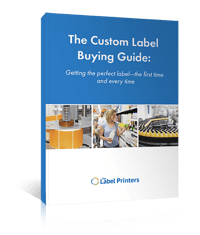
QR codes and linear barcodes are both machine-readable labels, but they serve different purposes — and choosing the right one can shape both consumer perception and operational performance.
What’s the difference?
One‑dimensional barcodes (like UPC, Code 128) encode product IDs in a series of stripes and spaces. They’re fast to read and widely used for inventory control and checkout — but carry minimal data and offer little to consumers. These codes are optimized for speed and reliability at point-of-sale and in distribution centers where fast scanning is key.
QR codes are two‑dimensional matrix codes capable of storing thousands of characters — from batch numbers and expiration dates to URLs and tracking information. Most smartphones can read them, making them ideal for consumer interaction and digital engagement. Their ability to store significantly more data allows brands to connect customers to web pages, product details, promotions, and traceability information.
Where Barcodes and QR Codes Make Sense
When to Choose Linear Barcodes
- High-volume checkout environments or established POS systems. Traditional retail scanners are optimized for 1D barcodes, making them ideal for stores and warehouses where speed is essential.
- Inventory tracking or parts scanning in manufacturing or warehouses. Barcodes are dependable for identifying SKUs, components, or equipment without requiring major hardware upgrades.
- Minimal data needs and emphasis on speed and consistency. If all you need is a product ID linked to a database, barcodes are efficient, cost-effective, and universally supported.
When to Choose QR Codes
- Educating or engaging customers via smartphones. A QR code can instantly link a customer to product information, user manuals, how-to videos, or promotional offers — extending customer experience beyond packaging.
- Providing full transparency on product traceability or sustainability. QR codes can connect to blockchain-enabled traceability data, helping companies demonstrate ethical sourcing, manufacturing conditions, or environmental impact data.
- Enabling dynamic data updates without redesigning label artwork. Instead of reprinting labels to update content, brands can simply update the linked webpage, ensuring customers always see the most up-to-date information.
The Rise of Smart Labels, Traceability & Consumer Trust
With growing demand for transparency and product authenticity, QR codes and smart labels are changing how brands communicate:
- Traceability from farm to fork. Smart labels allow companies in food, beverage, and pharmaceuticals to track products through every step of the supply chain, ensuring safety and regulatory compliance while building consumer trust.
- Access to certifications and compliance data. QR codes give instant access to certificates (like ISO, organic, or fair-trade certifications) without crowding the packaging with text or logos.
- Customer engagement and loyalty. Interactive packaging enabled by QR codes can offer personalized discounts, product tutorials, or community engagement programs, boosting brand loyalty.
- Brand protection. QR codes linked with authentication platforms can help customers verify product authenticity, combating counterfeiting and gray-market sales.
Smart labels often connect barcodes with digital links — like GS1’s Digital Link — bridging each product’s digital profile to its physical label, streamlining traceability and engagement.
GS1 Sunrise 2027: A Turning Point for Label Design
The GS1 Sunrise 2027 initiative represents a global mandate to shift from 1D (UPC/EAN) to 2D barcodes — most likely QR or GS1 DataMatrix — by the end of 2027.
Why it matters:
- Richer product data. 2D barcodes can encode batch, expiration, and certification details directly in the label, supporting advanced supply chain needs like faster recalls and enhanced customer transparency.
- Retail technology evolution. Major retailers and brands are testing QR code-enabled checkout systems to ensure compatibility with evolving POS infrastructure.
- Consumer empowerment. Shoppers can scan labels to view digital product passports, recycling instructions, or promotional content, aligning with growing demands for sustainability and transparency.
What the shift means for labeling:
- Label layout adjustments. Designers will need to balance branding elements with space for high-resolution 2D codes, ensuring scannability without sacrificing shelf appeal.
- Production line upgrades. Some packaging lines will need enhanced printing and verification technology to ensure error-free QR and 2D barcode printing at high speed.
- Dual-coding during transition. Many products may need to feature both 1D and 2D barcodes temporarily to ensure compatibility during the transition period.
How to Prepare: Key Questions for Selecting a Custom Label Printer
- Do they guide you through barcode selection? A knowledgeable custom label printer will explain trade-offs between 1D, 2D, and hybrid solutions, considering your product goals, compliance needs, and technology infrastructure.
- Can they support GS1-compliant designs? Your printer should be experienced in designing and producing labels that meet GS1 standards, including proper quiet zones, contrast, and orientation for scannability.
- Do they offer digital and variable-data printing? Modern labeling increasingly requires serialization, batch coding, and variable imaging. Digital printing capabilities ensure you can make changes quickly and cost-effectively.
- Can they integrate brand protection features? Look for a printer who can embed overt and covert security features — from serialized QR codes to microtext — to protect against counterfeiting while maintaining branding.
At The Label Printers, we combine ISO-certified processes, in-house digital and flexo printing, and brand protection engineering to deliver label solutions that meet compliance, traceability, and marketing needs — today and beyond GS1 compliance.
Practical Tips: Designing Effective QR or Barcode Labels
- Size and print quality matter. QR codes and barcodes need sufficient space and high contrast for easy scanning. Small, dense codes can frustrate users or result in scan errors. Always test scannability across different devices.
- Link to a clear action. Every QR code should lead to an intentional experience — whether it’s product documentation, a how-to video, or a personalized promotion — to maximize customer engagement and conversion.
- Plan for dual usage. During the GS1 transition, many brands will benefit from featuring both traditional barcodes and QR codes on packaging, ensuring compatibility with legacy POS systems while preparing for future-ready solutions.
- Test for real-world conditions. Labels must perform in diverse environments — from cold storage to high humidity to direct sunlight — without degrading scannability. Choose materials and adhesives based on your product’s lifecycle conditions.
How The Label Printers Can Help You Navigate Smart Label Trends
- Experience across industries. Since 1967, we’ve supported industries ranging from food and beverage to pharmaceuticals and electronics, providing insight into the nuances of each sector’s labeling requirements.
- Experts in traceability and brand protection. We design and produce labels with security elements, serialized codes, and authentication features to safeguard your brand and customers.
- Flexible, high-performance production. Our digital and hybrid printing capabilities allow us to produce short runs, handle rapid design changes, and manage variable-data requirements seamlessly.
- Lean fulfillment and scalability. We offer just-in-time inventory management and scalable solutions, making it easier for businesses to adjust to sudden demand shifts or growth.

Get the right label easier, every time with our Label Buying Guide
Quick Reference: Bar Code or QR Code?
| Use Case/Goal | Recommended Solution |
| Fast inventory/pos scanning, minimal data |
1D barcode (UPC, Code 128) |
| Consumer engagement, traceability link | QR code with URL to digital content |
| GS1 compliance, supply chain transparency | 2D barcode (QR or GS1 DataMatrix) |
| Phased rollout of existing hardware | Dual labeling during transition |
By understanding how QR codes, barcodes, smart labels, and GS1 Sunrise 2027 shape modern labeling needs, you can choose a custom label printer with the technical and consultative expertise to future‑proof your label strategy. At The Label Printers, we’re equipped to guide you through every step — from risk avoidance to innovative label solutions built for traceability, branding, and regulatory needs.

